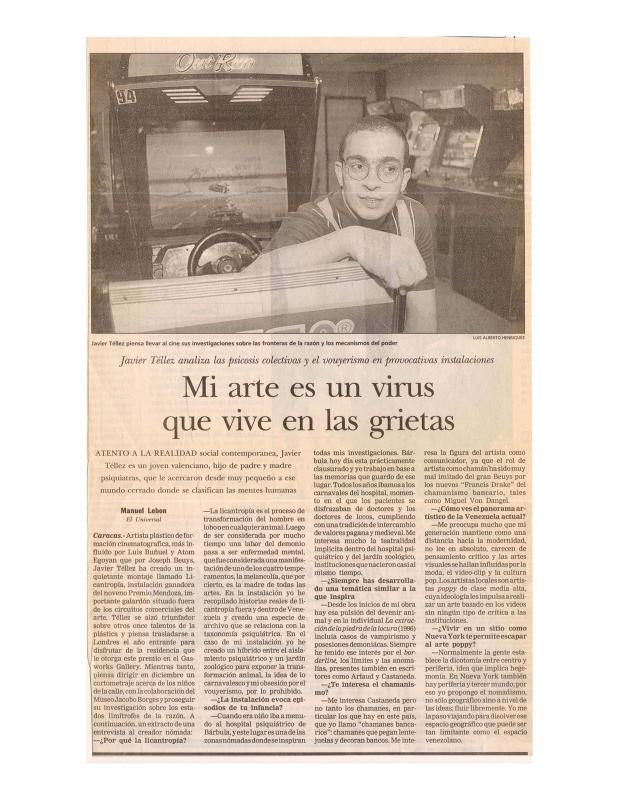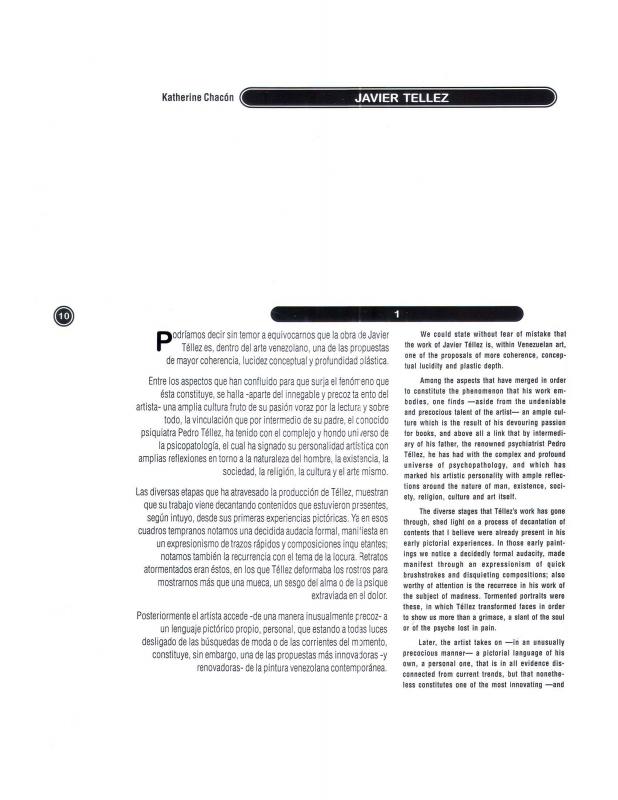This interview is the text of the curatorial catalogue written by Ruth Auerbach for the 1992 installation, Trobar clus,by Javier Téllez (b. 1969) (Caracas: Sala RG. in the Casa de Rómulo Gallegos). Auerbach begins this essay with information about the main interests and universal themes that appear in the work of the Venezuelan artist. She goes on to address the problems of the existential crisis as well as the human values at the heart of contemporary art. The text includes an important commentary, which stems from the very rich dialogue between artist and curator on the concept of “painting.” The question arises whether painting is amplified or negated through the genre of installation, leading to the emerging 1980s generational interest in the trend called the “return to painting.” This was a somewhat conservative stance that replicated the French retour à l’ordre, which arose in response to the excesses of the historical avant-garde. Téllez observes that the fundamental transformation of art in the twentieth century will turn out to be the extinction of the classical concepts of both “painting” and “sculpture.” Auerbach’s questioning about which interest predominates in the artist’s three-dimensional work—the installation of the object or providing new possibilities for painting— reflects one of the basic themes in the Venezuelan art of the 1980s.
In some way, Téllez emphasizes his interest in painting when he states that the painting has lost its function as an illusory “window” through which the artist “represents” something. The artist’s approach incorporates the deck of cards into the medium of the canvas bed to create a kind of double readymade. As the artist sees it, the fact that the painting is turned into an object is an element that links his work to contemporary art.
In various curatorial projects that reached a national audience and through her work in the Caracas gallery Sotavento, Auerbach set forth a public record of Venezuelan art as created in the 1980s, including a number of interviews. In these, her particular focus was the work of the artist; at the same time, she reflected the common threads of those years, providing a wide-ranging discussion of the validity of painting as an autonomous language and beyond.
[For other texts on work by Téllez, see the ICAA digital archive “Del mausoleo al juego en cuatro imágenes,” by Rubén Gallo (doc. no. 1155086); “La extracción de la piedra de la locura: Una instalación de Javier Téllez,” written by Carmen Hernández (doc. no. 1154986); the interview, “Mi arte es un virus que vive en las grietas,” by Manuel Lebon (doc. no. 1154938); the essay “Javier Téllez,” by Katherine Chacón (doc. no. 1155070); and the review, “La pieza ‘Licantropía’ obtuvo el premio Eugenio Mendoza,” by Ana María Mendoza (doc. no. 1154954)].





